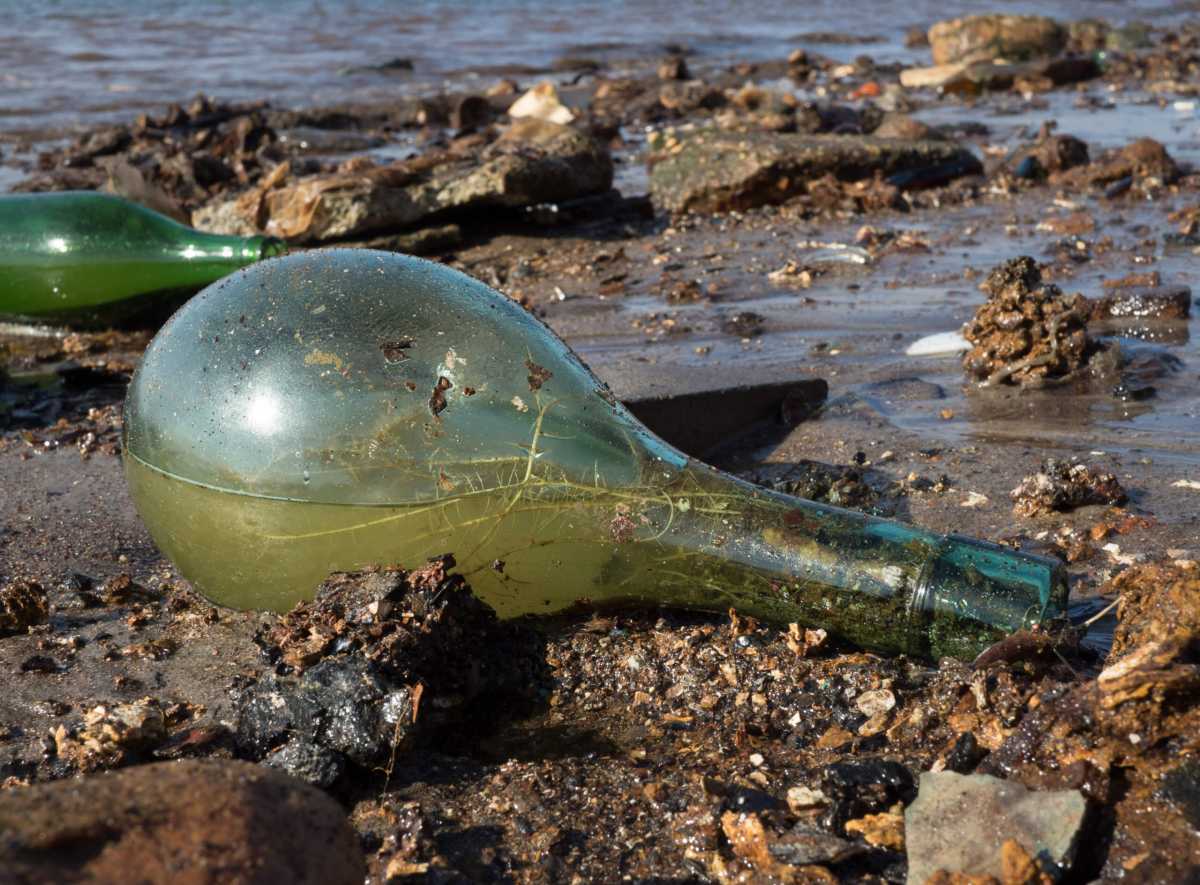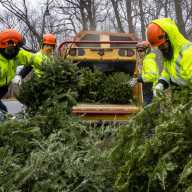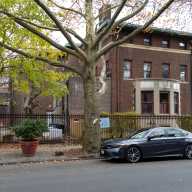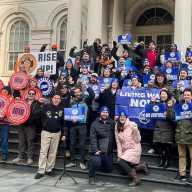One man’s radioactive trash is another man’s treasure!
The National Park Service will soon embark on a planned cleanup of southern Brooklyn’s Dead Horse Bay, which has been closed since August when park stewards discovered the presence of radioactive materials — but one local historian is looking to salvage the trash currently scrapped in the bay, saying it would provide a “time capsule of artifacts of daily life” from bygone Brooklyn decades.
“In light of the discovery of radioactive material on the beach at Dead Horse Bay and the planned CERCLA cleanup, we are writing to urgently request that as much of the debris as possible be collected, decontaminated, conserved, and catalogued,” wrote Miriam Sicherman in an open letter accompanying her petition.
National park bigwigs logged concerning radiation levels in nine separate areas in the southern half of the bay in 2019, which they attribute to deck markers — a disc-like light that used radioactive powder to illuminate old ships at night.
Park honchos removed two broken markers from the beach and a trail in 2019, but their contents have contaminated their surrounding areas, surveyors previously told Brooklyn Paper.
The National Parks Service is currently in the process of planning a cleanup of the site using the process outlined in the Comprehensive Environmental, Response, Compensations, and Liability Act (CERCLA) — which is commonly called the Superfund law.
But Sicherman fears surveyors will simply dispose of the bay’s debris, which she said is more than just trash, but a peek inside the lives of average New Yorkers before and during the 1950s.
“The garbage emerging from the landfill at Dead Horse Bay comprises an accidental time capsule of artifacts of daily life in the 1950s and earlier,” Sicherman wrote. “Decades later and into the future, there is much we can learn from those artifacts about midcentury New Yorkers — everything from their makeup, fashion, and cleaning regimens, to their drinking habits, to the news they read.”
As one of the many collectors who have scavenged the area for historical artifacts, Sicherman said the range of items she found leads her to believe the landfill holds debris from 1950s houses that Robert Moses demolished during a failed attempt to expand the peninsula.
“It was household garbage but not likely what people threw out in their garbage cans, what it seems to have been is demolition debris,” Sicherman told Brooklyn Paper. “Robert Moses demolished various neighborhoods, so when they would demolish these buildings that became garbage that could become landfills.”
This debris is now — and has been since the 1980s, Sicherman said — coming up from underneath the soil and drifting towards the bay, which, if radioactive, can potentially expose visitors to the toxic material if they wash up along the shore, according to the National Parks Service.
“A visitor potentially could be exposed to radiological contamination or man-made radiological articles either from unauthorized digging and surfacing a deck marker or other man-made radiological article (with the aid of a metal detector) and/or from an article that may become exposed along the shoreline,” reads the agency’s website.
But the radiation exposure should be of low-risk for most Bay Ridge visitors, a spokesperson previously told Brooklyn Paper.
“There is a low potential for exposure to radiation from passive walking at the site,” said Daphne Yun.
Over 100 people have signed the petition as of last week, which Sicherman said she soon plans to send to the appropriate agencies but suspects she has some time as these cleanups can sometimes take over a decade to complete.
“These Superfund projects take 20 years, so I don’t feel like I am in some kind of gigantic rush,” Sicherman said.
Sicherman first became interested in the debris-rich waterway when conducting research for her book, “Brooklyn’s Barren Island: A Forgotten History,” which tells the story of the outcast island off of Brooklyn’s southeast shore, where dead horse carcasses were converted into different industrial products and whose waterway along the western shore was nicknamed Dead Horse Bay, before it was filled in to make way for the Marine Parkway Bridge.
“I started out being interested in Barren Island, and obviously it’s the same place as Dead Horse Bay, ” said Sicherman. “Barren Island was actively processing garbage and horses from the 1850s to 1930s, then everybody got evicted and all the factories were shut down by 1936.”




















